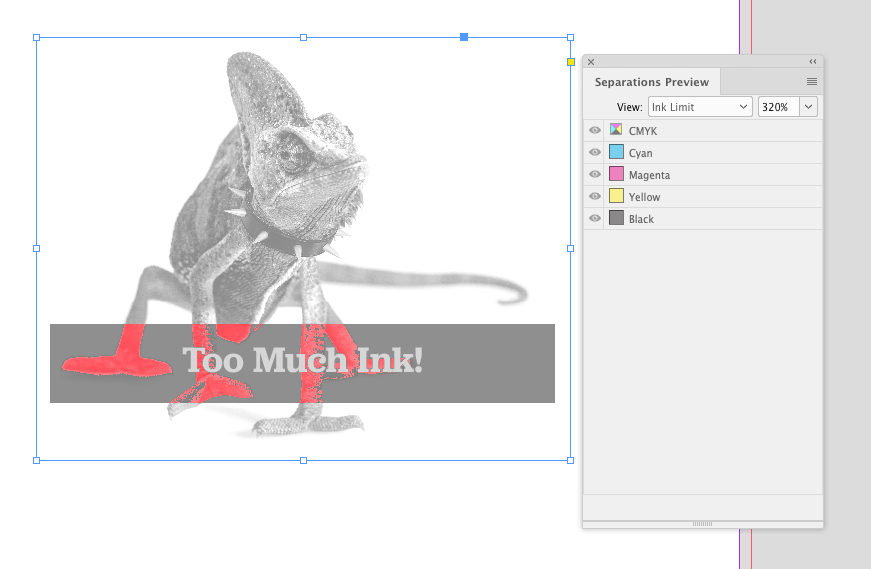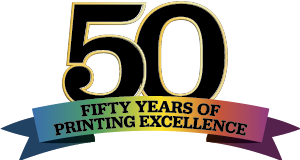With Ink, Less is More
Ink on paper going through the press is like water going on a sponge, and when you get too much ink, it doesn’t absorb properly into the paper. This is why we need to be mindful of how much ink is going on the paper. We also need to be mindful of what kind of paper or substrate that we are printing on and how it will absorb the ink. If we are printing on an uncoated paper stock, that would be much more absorbent than a glossy vinyl stock.
The average maximum ink coverage is 320%, but this is number not set in stone. If you are printing on that glossy vinyl stock mentioned above, 320% is way too much. You probably want to use 260% or less for printing on vinyl. When in doubt, give us a call at 727-572-9999 to discuss your options.
Each ink has the potential to print up to 100%. For instance, if you are printing a lime green, you might have 50% cyan, 0% magenta, 100% yellow and 0% black. In this example, we have 150% coverage.
Where it gets tricky is photos, especially if there are elements Darkening or Multiplying over the photos. The good news is that we have a workflow that can apply ink limits when too much ink is used. In theory it doesn’t change the look of the imagery, but in reality, it can, which is another reason to be aware of how much ink is used before sending the art to be printed.
A good way to check your ink coverage before sending the art to print is to export a pdf, exactly as you would to send to print, open the Output Preview in Acrobat Professional and select Total Area Coverage and set the percentage at whatever percent you want to use. Areas with too much coverage will be highlighted. This feature is only available in the Professional versions of Acrobat, not Viewer. If you have access the the Adobe Creative Cloud, you have access to the Professional Versions of Acrobat. The Output Preview panel is a very useful tool!

This feature is also available in the Separations Preview in InDesign. Just select Ink Limit in the View and don’t forget to put the percentage in.

So, what can happen if too much ink makes it to the press? We get what we call “Offset.” Since the paper is running through the press at a high speed and stacking up in the delivery, eventually becoming pretty heavy, the excess ink gets on the back of the sheet of paper above it. Nobody likes that on their brochure! Worse yet, it can “Brick.” This is when the paper all sticks together and makes a big, bad Brick. Really Bad! Nobody wants that to happen, ever!
The moral of the story is that with ink, Less is More!


